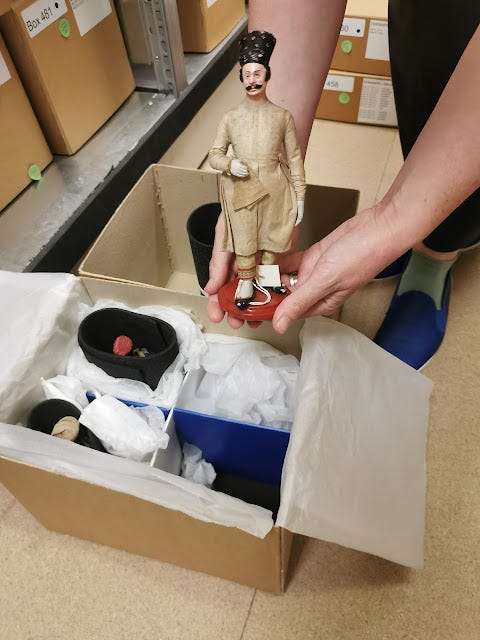I’ve just got back from looking at some of Jennie’s tapestries which are in an exhibition as part of Warwickshire Open Studios in Vitsoe, Leamington Spa.
(The above image, courtesy of Annabel Rainbow, is of Vitsoe showing the poppies that bloomed so madly the first year after the land outside, landscaped to represent old Warwickshire ridges and furrows - were laid to wildflower seed)
Jennie works with Vitsoe as creative director and among many things, also designs railway bridges: she showed us her book of bridge designs and there are at least 24 dotted around the country! She’s also designed the floors in the Vitsoe shops, so is a busy person and you might wonder when she has time to do anything else. But like all creative people she needs time to think and do her own thing.
Tapestry could never be called quick, growing very slowly as the threads are woven by hand, thin little rows at a time. The coloured yarns are the weft and they are woven in and out of the warp threads which are plain and attached to the loom (they are not seen once the weaving is complete). Her pre-dyed yarn comes mainly from Norway and Sweden.
Tapestries are woven on their side with a cartoon (a design on paper drawn out) attached behind with a basting stitch which stops the design slipping as the tapestry progresses. Jennie achieves subtle shading by gradually weaving lines of another colour through the main one, building gradually, and from a distance these lines blur and disappear.
In this photo, you can see Jennie weaving her weft threads through the warp threads, with the cartoon just behind and the basting stitches holding the design in place.
She uses plant references in stylized form not graphic, and her colours are vibrant and exciting, and the shading she achieves makes her work seem 3D. I thoroughly enjoyed talking to Jennie this morning, seeing her tapestries and finding out how a tapestry is made. Sadly, today is her last day exhibiting with Warwickshire Open Studios, but don’t forget she’ll be joining us at Leamington Jan/May 2025 when you can see her work and talk to her to find out more.


















